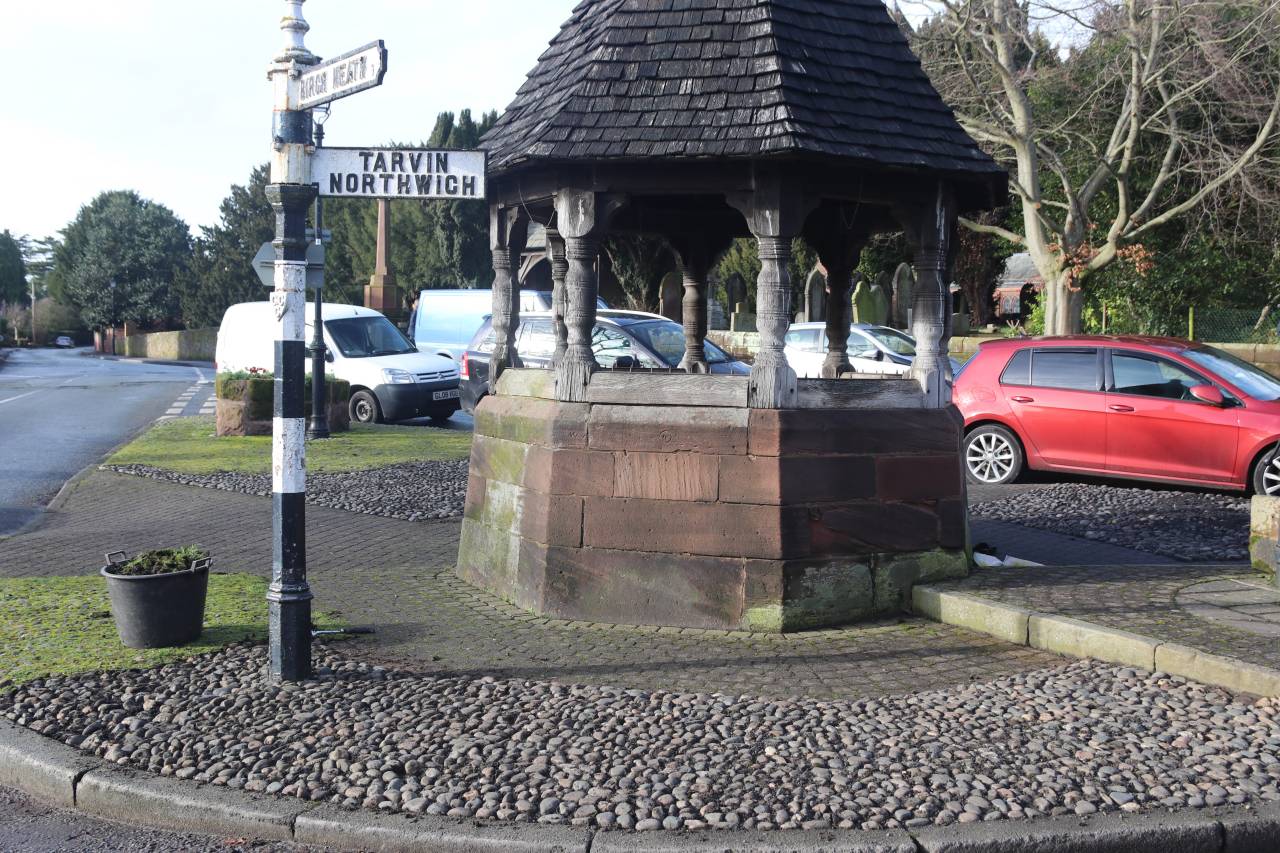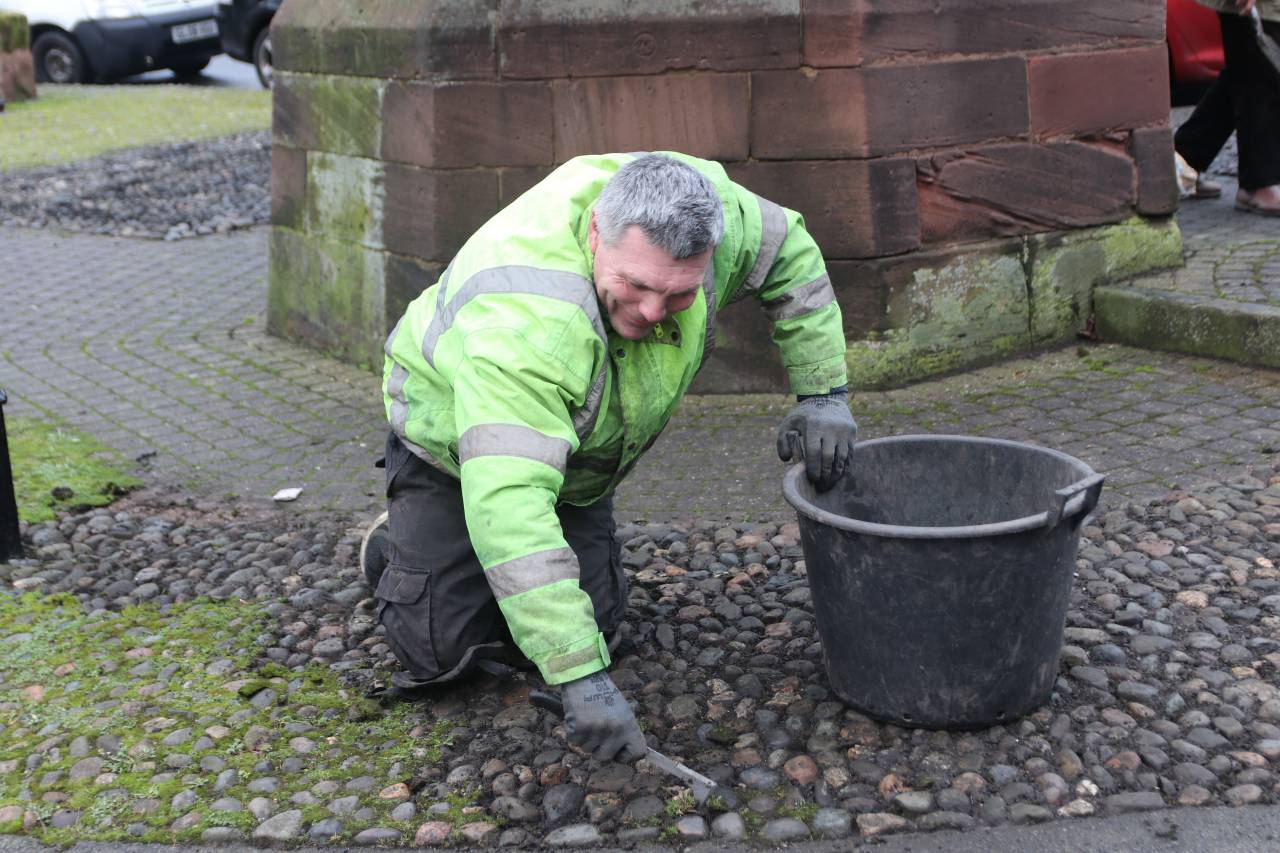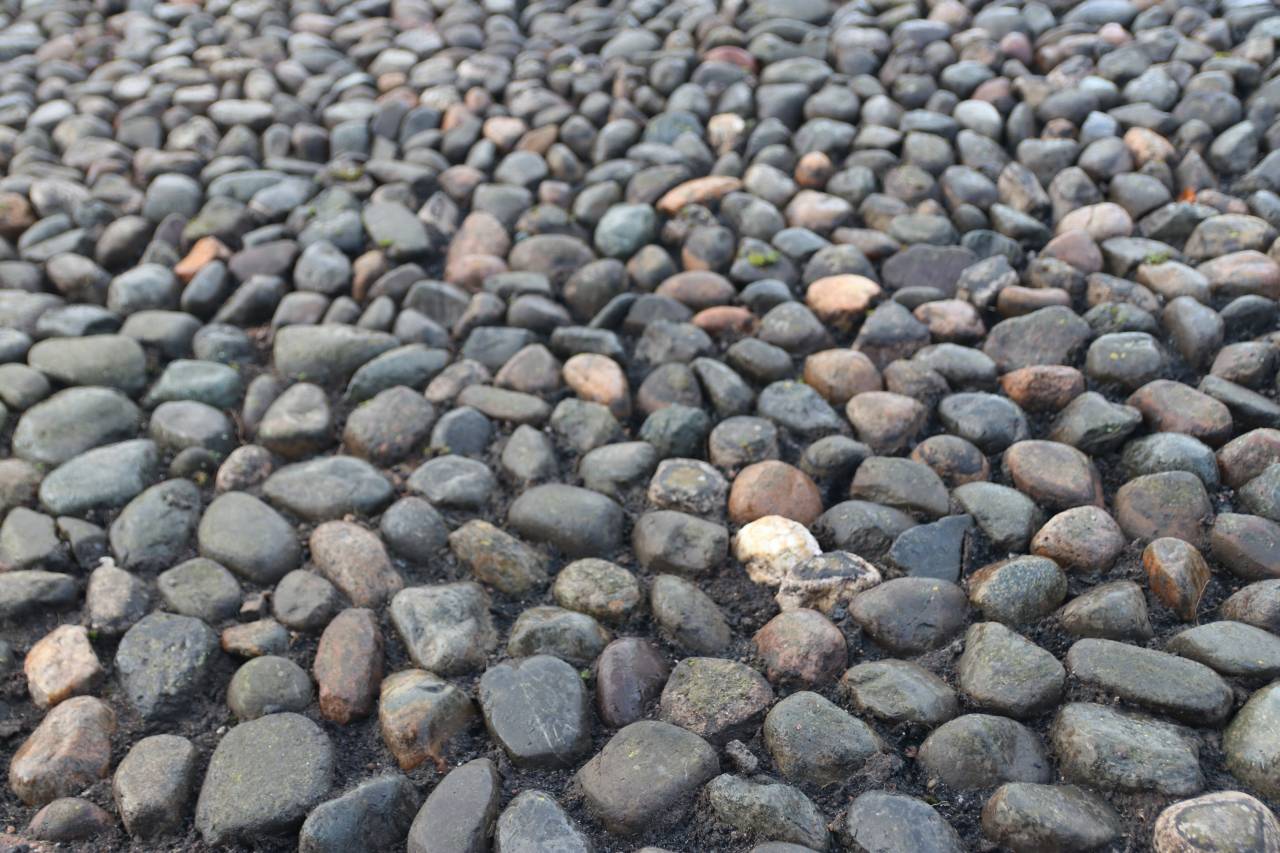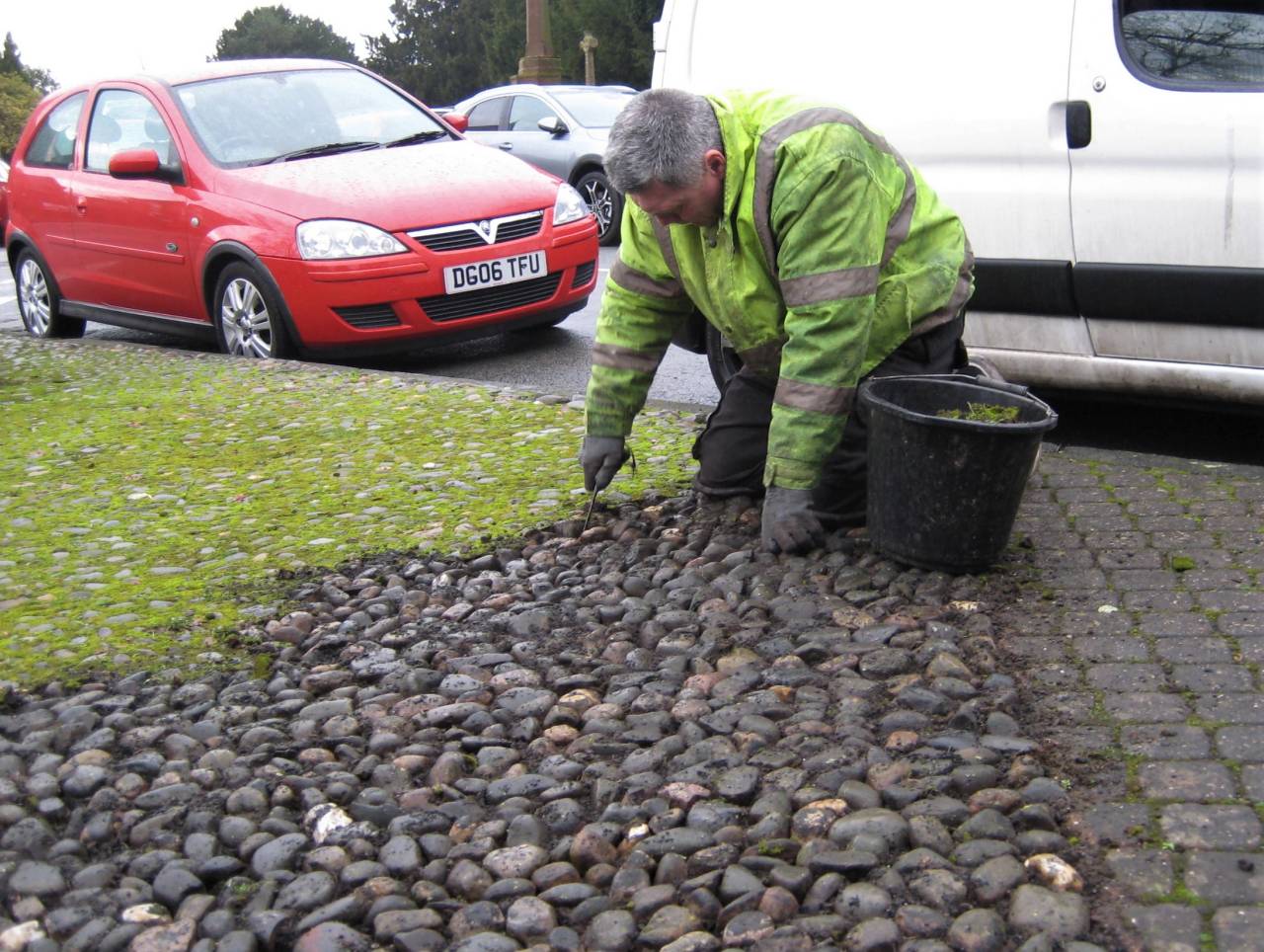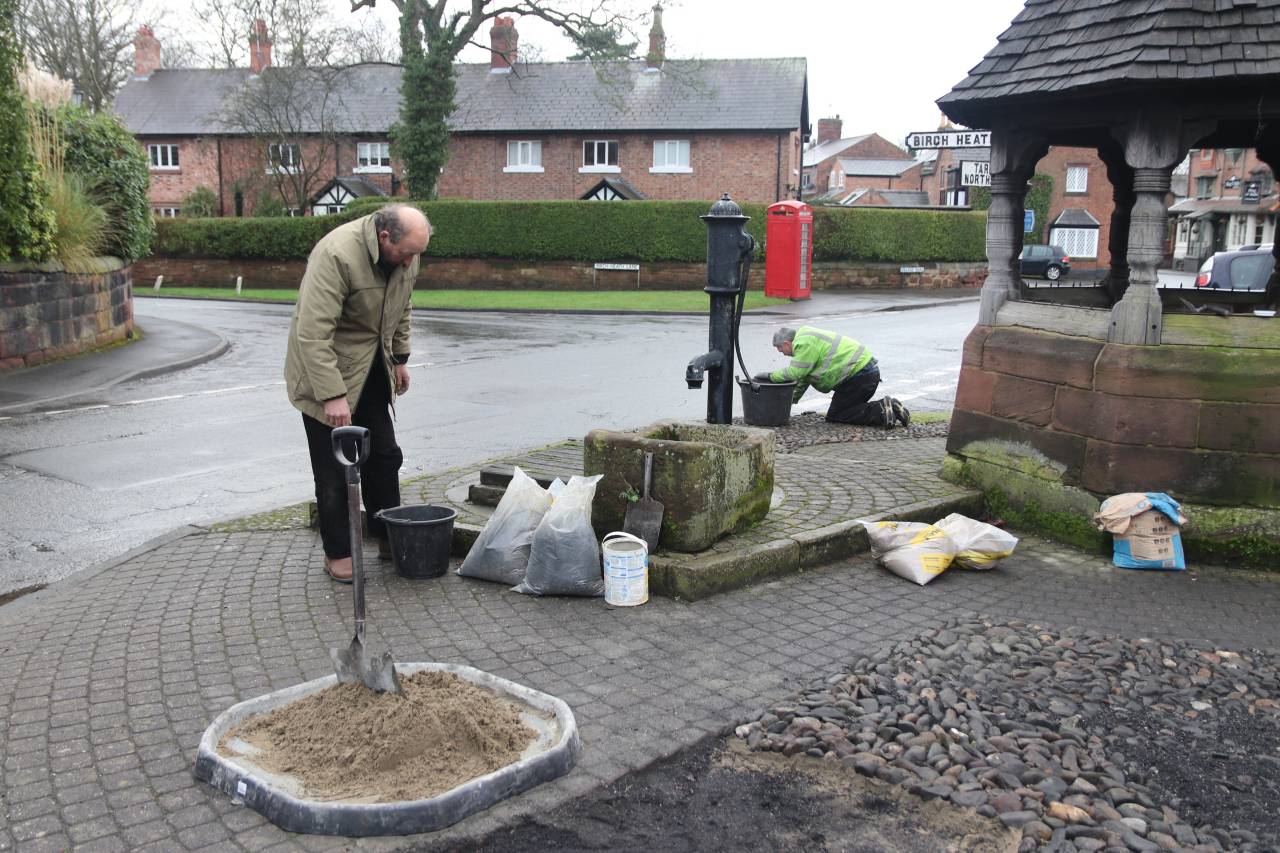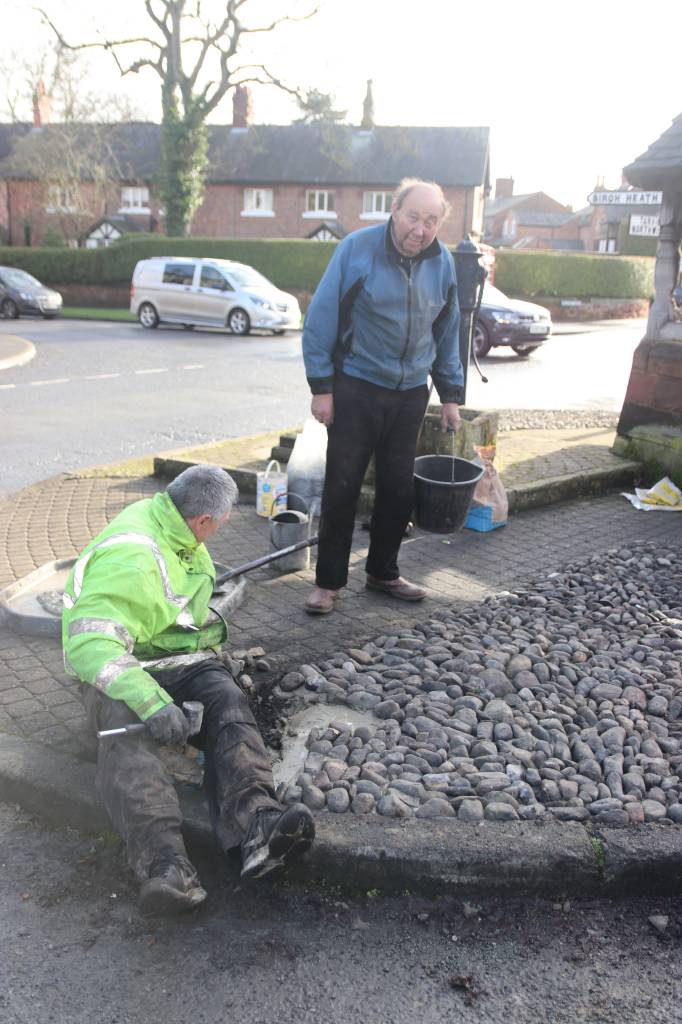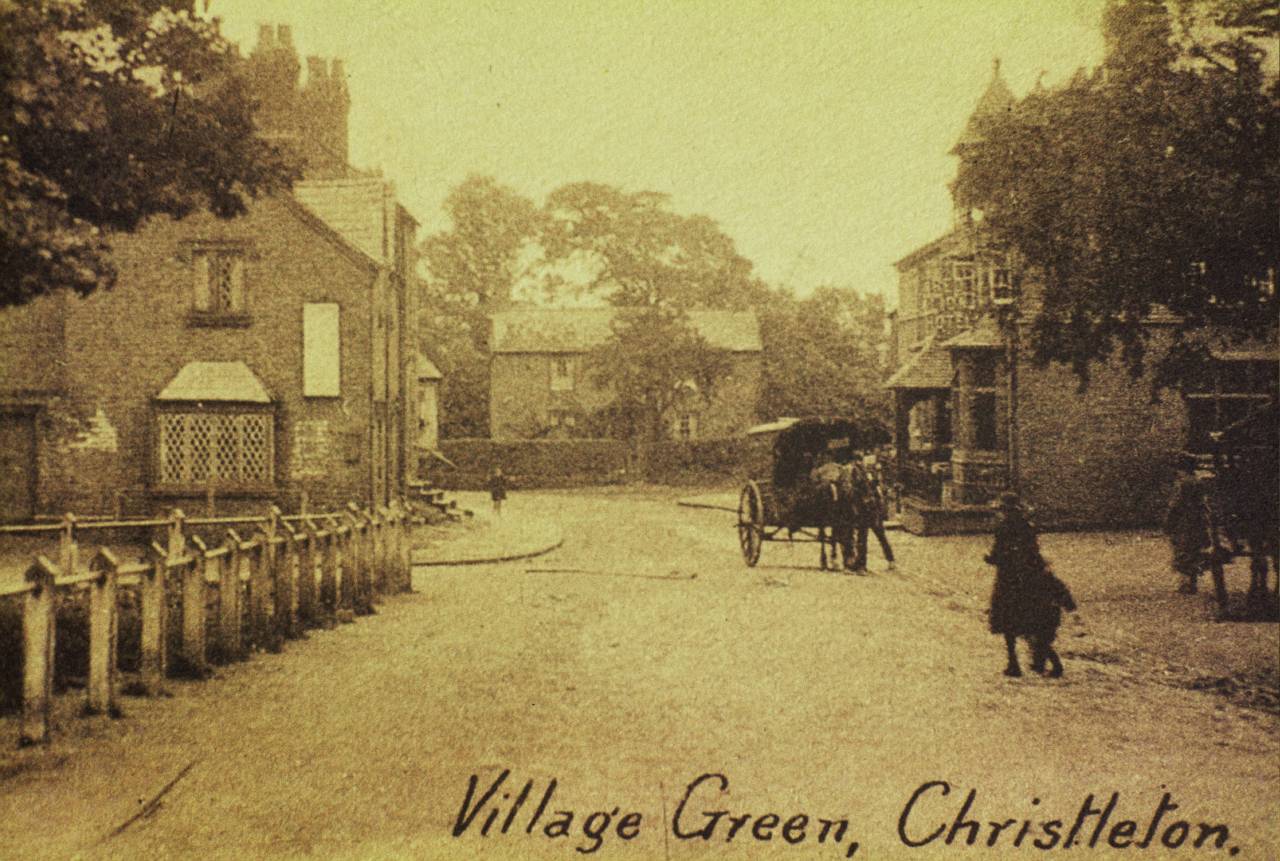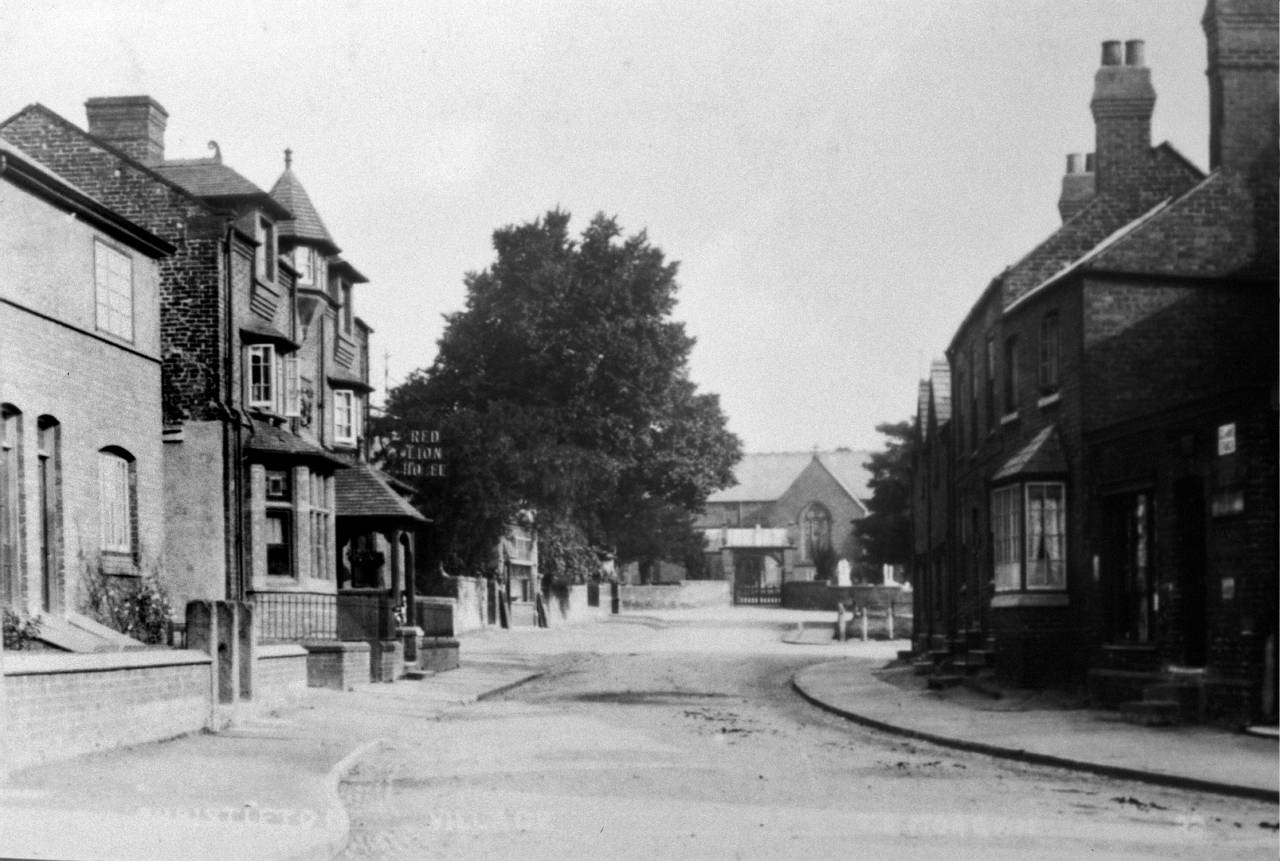The History File
February 2020

David Cummings
Restoring the Cobbles
at the Pump House
During late January, and early February many readers will have seen two workmen, Rob Pearce and his colleague Stan restoring the beds of cobbles around the village pump house. This is a rare skill and my only other experience of seeing cobbles laid was at Abbey Green adjacent to the Cathedral in the 1980’s. Villagers from early times discovered the wealth of material available to them at the Pit. There were pockets of sand for use in the building trade, areas of gravel and rough stones to be used for road making, a deep red clay to make bricks, and a grey clay/marl which could improve the quality of local fields by adding body to the sandy structure and providing a natural fertiliser from the lime content within it. I guess that several pockets of suitable small boulders/cobbles were found in the area too. There is also written evidence from the minutes of the Chester -Tarvin Turnpike Trust that a "new" source of gravel for road making at Littleton came from the area of Hockenhull Platts. The Turnpike Trust had offered a prize of 100 guineas to anyone finding a source of this road making material. The road was the present Tarvin Road through Littleton, built along the line of an older Roman road from Delamere to Chester via Stamford Bridge in the 1780's, and replacing the old medieval highway across the raised causeway and 'Roman Bridges' at Hockenhull Platts.
The cobbled causeway and bridges at Hockenhull were a spectacular sight until 2002, when sadly a 100 yard section of the ancient highway was destroyed by the Highway Authority to create a “safe cycle way” from Chester to Tarvin. That section of the cobbled causeway leading to the first bridge on the Christleton side, is now always ankle deep in mud during the winter. However there still is a section of the cobbled area visible on the bridges themselves and between the middle and third bridge on the Tarvin side.
A cobble is sometimes described as larger than a pebble and smaller than a boulder, and formed from volcanic rock. They are very hard and durable. Large areas of the village were once covered in cobbles, and old village photographs show them along Pepper Street, Village Road, Littleton Lane, Rowton Bridge Road and Plough Lane as well as on backyards and village farmyards. It looks as though the cobbles on village roads were still on the ground in the 1930’s, but I don’t have evidence to show when they were removed. It is clear that in some places, Pepper Street for example, the current tarmac surface was placed on top of the cobbles, as a small section was exposed recently on the approach to Trooper Bridge. Older residents will possibly remember that the cobbles currently being restored were originally laid in front of the Lych Gate, but were removed perhaps twenty years ago as a health & safety issue, and relayed as a decorative feature around the Pump House.
-

-

-

-

-

-

-

-

Pepper Street, Christleton
-

Village Green, Christleton
-

Village Road, Christleton
